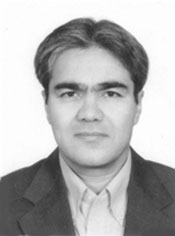Program Information
Quality Control in Small Fields Radiotherapy for SIEMENS ONCOR Linear Accelerators Using EGSnrc and Film Dosimetry
K Hadad1*, N Padargani1 , A Mosleh-Shirazi,2 , R Faghihi1 , (1) ) Shiraz University, Shiraz, Fars, (2) Shiraz University of medical science, Shiraz, Fars
Presentations
SU-I-GPD-T-468 (Sunday, July 30, 2017) 3:00 PM - 6:00 PM Room: Exhibit Hall
Purpose: Dosimetry of small fields radiotherapy with Siemens ONCOR 6 MV accelerator is carried out using EGSnrc code and Gafchromic EBT3 film dosimetry.
Methods: BEAMnrc and DOSXYZnrc are used for modeling Siemens ONCOR 6 MV accelerator and a homogeneous water phantom of 20 x 20 x 21 cm³ and 0.2 x 0.2 x 0.2 cm³ voxels is exposed to the phase space. Simulation error referred to mean dose error of voxels is kept under 1 % in voxels for obtaining dose profile and Percentage depth dose (PDD). The dose profile in 5 cm depth for small fields (under 5 cm) and 10 cm for the conventional field is calculated and measured. PDD on the central beam axis shows the buildup region is expanded as deep as 1.5 cm into the phantom. Both dose profile and PDD are softened using a 3-degree median filter except for field sizes under 2 x 2 cm².
Results: The dose profiles and PDDs of homogeneous water phantom with different field sizes are validated by measurements carried out using water phantom complying with AAPM-TG 53 acceptability criteria testing. PDDs and dose profiles are extracted from the 3ddose data file calculation of DOSXYZnrc and compared with the experimental data obtained by Gafchromic EBT3 film dosimetry.
Conclusion: The results show a good agreement between EGSnrc simulation and the experiment. EGSnrc and EBT3 film dosimetry are accurate in predicting dose profile and PDD in small fields dosimetry. The methodology could be further developed to investigate the effects of inhomogeneity in small field (e.g. lung) dosimetry.
Contact Email:
